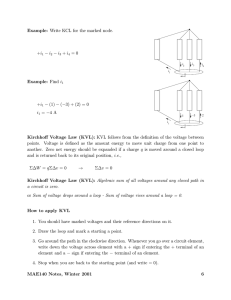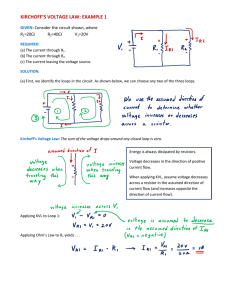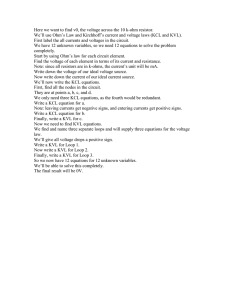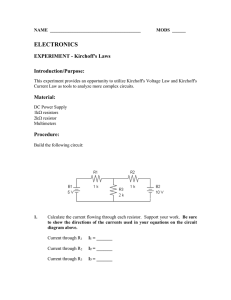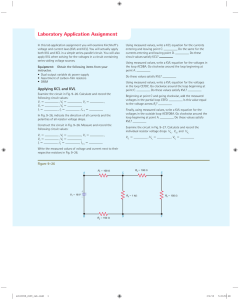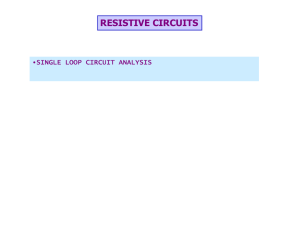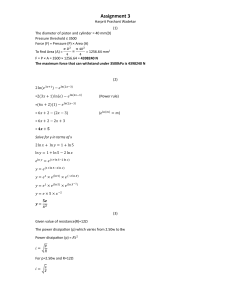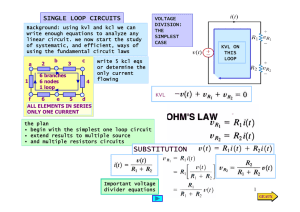KIRCHOFF`S VOLTAGE LAW: EXAMPLE 2
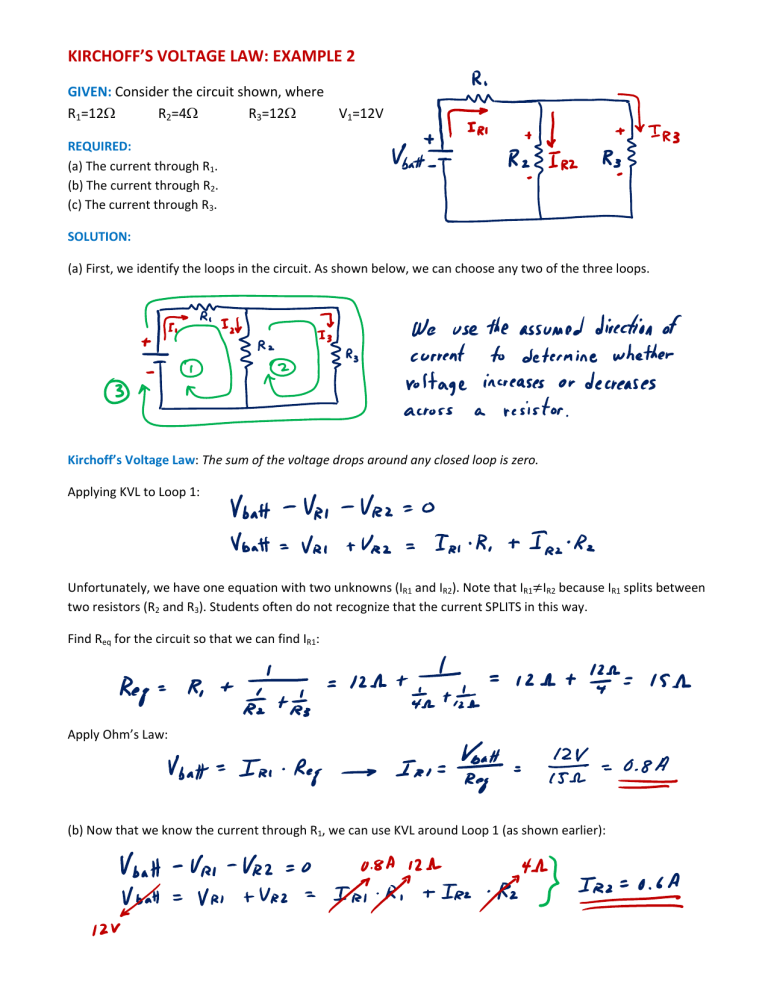
KIRCHOFF’S
VOLTAGE
LAW:
EXAMPLE
2
GIVEN:
Consider the circuit shown, where
R
1
=12 Ω R
2
=4 Ω R
3
=12 Ω V
1
=12V
REQUIRED:
(a) The current through R
1
.
(b) The current through R
2
.
(c) The current through R
3
.
SOLUTION:
(a) First, we identify the loops in the circuit.
As shown below, we can choose any two of the three loops.
Kirchoff’s Voltage Law : The sum of the voltage drops around any closed loop is zero.
Applying KVL to Loop 1:
Unfortunately, we have one equation with two unknowns (I
R1
and I
R2
).
Note that I
R1
്
I
R2
because I
R1
splits between two resistors (R
2
and R
3
).
Students often do not recognize that the current SPLITS in this way.
Find R eq
for the circuit so that we can find I
R1
:
Apply Ohm’s Law:
(b) Now that we know the current through R
1
, we can use KVL around Loop 1 (as shown earlier):
(c) Apply KVL to Loop 3:
DISCUSSION:
•
We can apply KVL to Loop 2 to check our work:
•
Look at a voltage and current balance:
•
Notice that when the current splits at node A, more current goes through R
2
(4
Ω
) than through R
3
(12
Ω
).
Electricity takes the path of least resistance.
